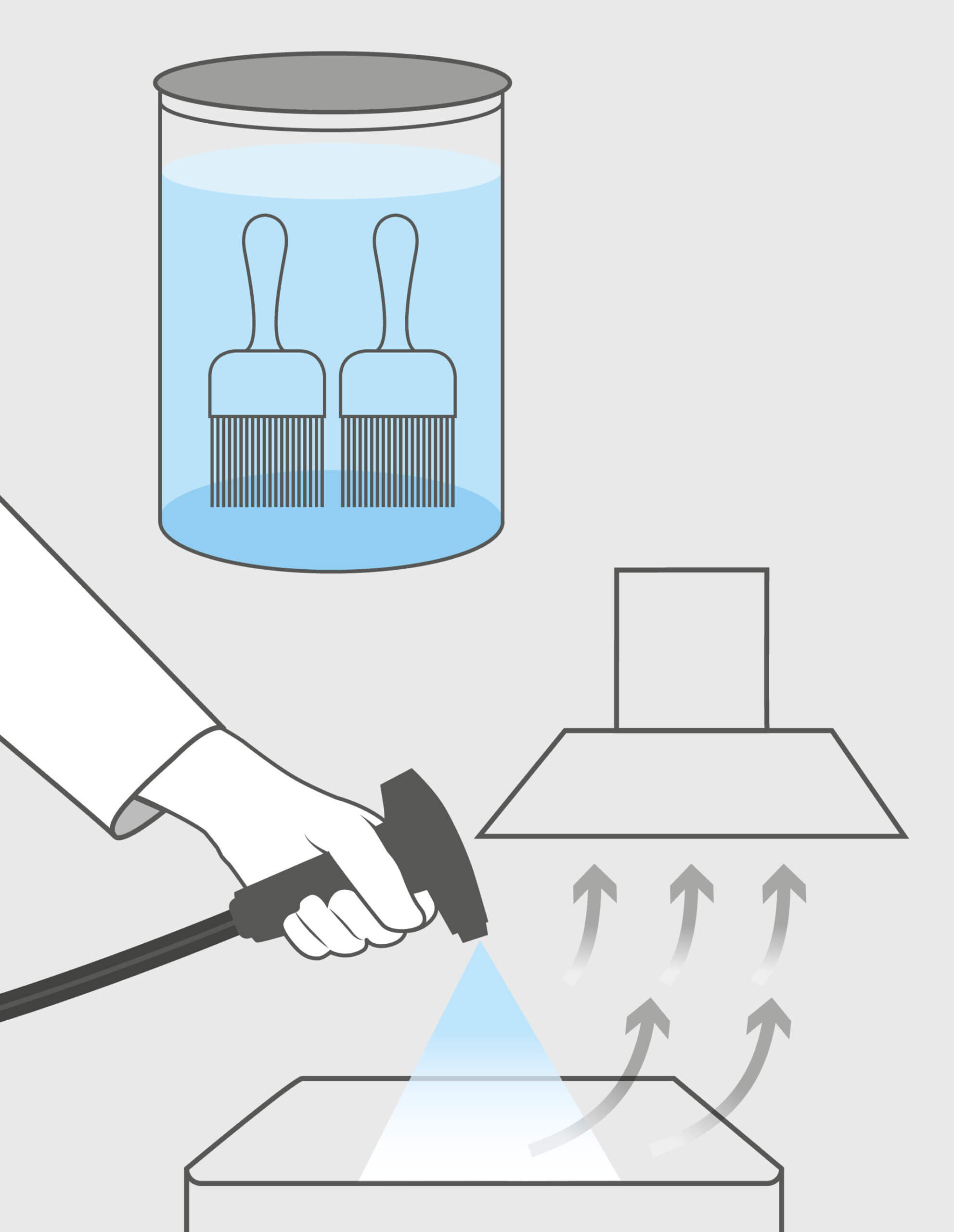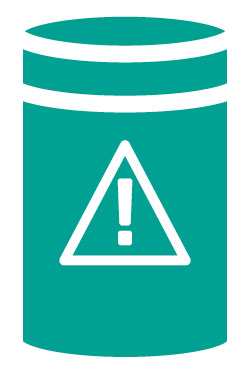How to handle gelcoats
Scott Bader's guide to handling Crystic gelcoats
When your gelcoat delivery arrives, it’s important to check the order details and shipping advice for:
-
Packing condition
-
Correct quantity
-
Product code: type, colour, spray or brush
-
Batch number
Important: Always store the catalyst separately from your gelcoat and resin.
Storage
- Keep in a separate storage room and out of direct sunlight
- Keep stock in the original kegs and drums, with lids and caps tightly closed
- Ensure your kegs and drums are sitting on pallets that are in good order
- Pay attention to your products shelf life and exercise regular stock rotation
- Store below 20°C. If your storage is cold (e.g., outside), the product needs to be acclimatised to an ambient temperature (18 – 25°C) before using

Mould preparation
Your mould needs as much care and attention as the gelcoat if you are to achieve the optimum finish. Here’s what to do:
- First check the mould for damage and clean thoroughly to remove any debris, dust or loose contaminants
- Next, apply an appropriate release agent to the surface of the clean mould, following the instructions carefully
- For a new mould, ensure that the surface is sealed with an appropriate mould sealer prior to application of the chosen release agent
- Keep the area used for gelcoating dust free
Material preparation
- Check that the drums or kegs picked from storage are in good condition and free from any damage prior to opening
- Check your product code for correct colour and type
- Ensure you have enough product mixed to spray or brush the mould in one session, ensuring even and consistent thickness
- Using a low shear mechanical mixer, mix the gelcoat every day before use in its original keg or drum, and leave to stand for 10 minutes to allow the thixotropy to recover
- Prior to use, make sure the gelcoat is at its optimal working temperature of 18-25°C (the absolute minimum temperature is 15°C)
- Use a clean pail if the gelcoat is decanted from its original packaging
Important: Always wear protective clothing, gloves and goggles.
Checking spray equipment
Just like with your moulds, all equipment needs to be well maintained to achieve the best results, and this includes your spray equipment if being used:
- Make sure your filters are clean and clear
- Select an appropriately sized spray gun, nozzle and angle to best suit the mould size and degree of complexity
- Check and adjust the spray pattern
- Use the lowest possible gun pressure that will achieve a uniform spray fan pattern
- Check the catalyst to gelcoat ratio
Spray operator protective clothing
The person applying the gelcoat must wear a protective disposable suit, face mask and gloves, at all times during spraying. Where there is a risk of ignition from static electricity, anti-static protective clothing should be worn.
Use a properly fitted, air-purifying or air-fed respirator complying with an approved standard if a risk assessment indicates this is necessary. Respirator selection must be based on known or anticipated exposure levels, the hazards of the product and the safe working limits of the selected respirator.
Working area
Gelcoating should be carried out in a purpose-built spray booth, in a separate area of the workshop that is set up with:


Cleaning and maintaining equipment
If brushes are to be re-used, clean thoroughly with solvent in a dedicated area or cleaning room with adequate ventilation to remove fumes. It is crucial that all residual gelcoat is removed from brushes to avoid contaminating a new batch when the brush is re-used. Washed brushes should then be stored, immersed in solvent inside a covered container.
Brushes need to be clean, dry and free from solvent when used for gelcoat application. Dry bristles thoroughly before use to ensure no moisture is introduced from brush to gelcoat.
Remove spray gun nozzle and flush the spray gun with cleaning agent. Clean nozzles and filters and all other components according to manufacturers’ instructions to prolong the working efficiency of the equipment.

Continued storage and disposal
If you still have some gelcoat left in your keg, tightly close the lid after use and store any unused product in the storeroom. Alternatively, if the keg is empty, follow existing regulations for safe waste disposal.
Discover how to apply Scott Bader Crystic gelcoats here.

